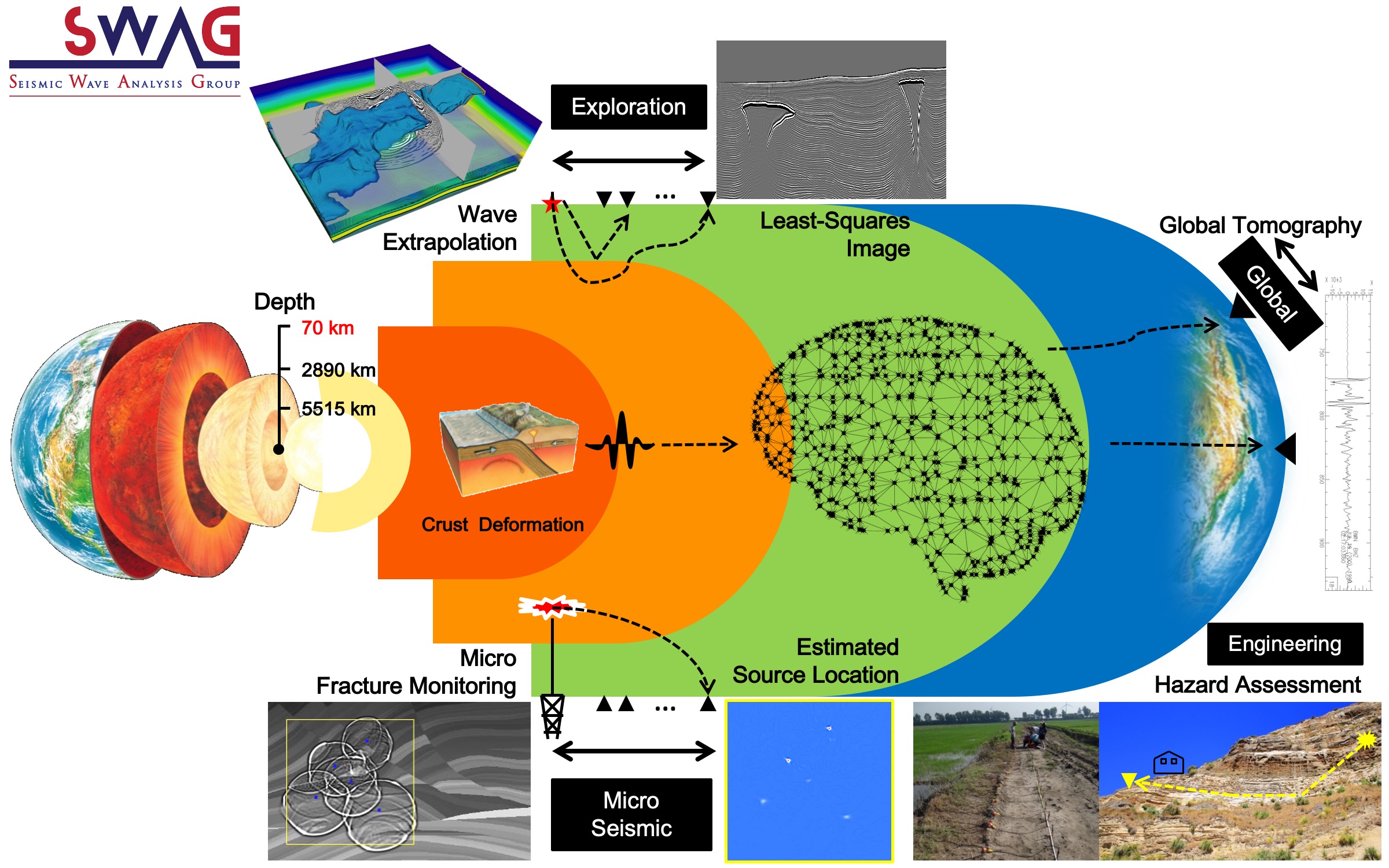ML-based Research
Artificial intelligence, and specifically, machine learning (ML) has recently emerged as a powerful tool to address many of the challenges we face in life. We aim at SWAG to be a leading hub for utilizing innovated ML methods, beyond the conventional supervised learning, to help us use recorded seismic data to illuminate the Earth at all scales and make the proper prediction of its content. From fault detection to salt boundary picking to image resolution enhancements, the quest to teach our computing devices how to perform these tasks accurately, as well as, quantify the accuracy has become our main objective.
Utilizing recent advances in machine learning algorithms and the availability of the modules to apply such algorithms, we have managed to focus on developing solutions on a wide range of seismic exploration applications, with a special focus on waveform inversion. We share some of these applications below.

Self-supervised blind-spot networks remove the requirement of labelled training data but can only suppress fully random noise. Adaptations have been proposed for targeting noise types with a specific, constant correlation however until now none tackle the noise field as a whole.
A scheme to improve resilience of self-supervised denoising procedures to pseudo-random data by incorporating a segmentation scheme into the learning process.
A methodology to obtain higher accuracy for high-dimensional wavefields compared to standard PINN.
Developing a DNN method to extrapolate high-wavenumber model components for band-limited FWI results.
Training a CNN network to effectively attenuate trace-wise coherent noise.
Utilizing PINN for hypocentre estimation through Laplace approximation.
An automatic approach for microseismic event location which is feasible for anisotropic media and irregular receiver sampling.
Using PINN to overcome the inability of conventional methods when handle large areas of missing information (gap) in the velocity model.
Predicting traveltimes to estimate the hypocenter of an event using PINN.
"Unflooding" salt methodology applied to Gulf of Mexico legacy data.
Capturing and storing the local and global features of seismic data in the pre-training stage.
A method to move NNs from synthetic to real data.
Denoising field seismic data with neural networks.
Regularized inversion technique using ML-prior.
A modified PINN to accelerate convergence and improve fitting..
An implementation for knowledge transfer between synthetic and field seismic data applications of low-frequency data extrapolation.
A deep learning approach for post-stack trace-by-trace matching to reduce the remaining 4D noise
An ensemble of convolutional neural networks (CNNs) for building velocity models directly from the data.
A target-oriented strategy through seismic redatuming to reduce the computational cost yet achieving high-resolution in the result.
A deep convolutional neural network (CNN) to directly map the field records to their event locations.